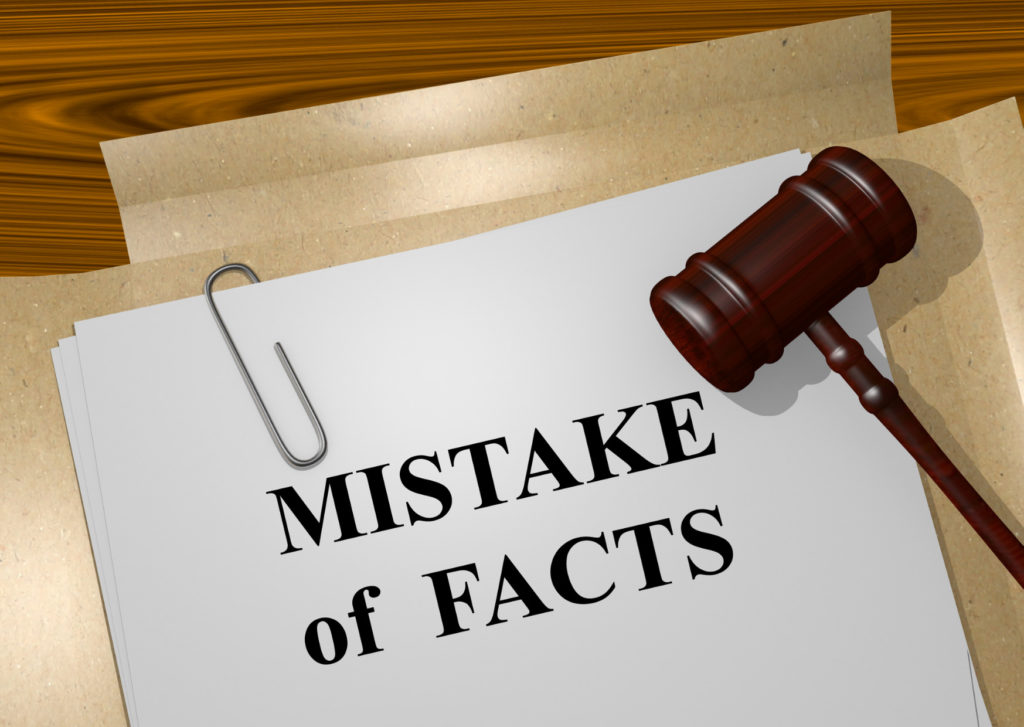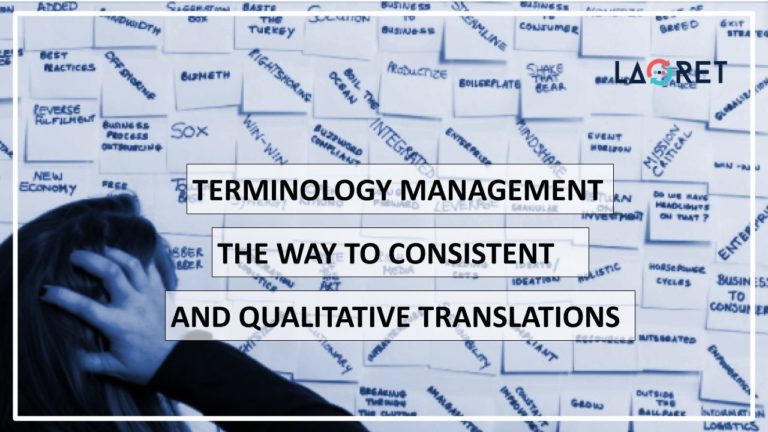Terminology Management: The Way To Consistent And Qualitative Translations
Translation quality tops the list as the priority for more and more global businesses. However, they don’t want the timeframe or budget to be stretched too much. At the heart of maintaining quality and consistency as well as efficiency, lies terminology management.
Embracing terminology management can take your translation quality to the next level. And in order for this to happen in the most productive manner, clients, Language Service Providers (LSP), translators and optimized tools, all play an integral part. Let us show you how!
What Is Terminology Management?
Terminology management is the process of identifying, storing, and managing company, customer and product-related terminology along with its multilingual approved translation. The Terminology is specific and often unique to the company’s mission, angle, and topic.
The Key is that this terminology needs to be translated in a specific way. In order to manage the terminology effectively, they are kept in a term-base (also known as Glossary which is a master list of specific terms along with their approved translations) created within a Translation CAT Tool. Here, they can be leveraged within any translation project related to the company the term-base is designed for.
This term-base stores:
- Multilingual terminology: you will be able to search for a term, and every approved translation will be shown alongside it.
- References and notes: notes are handy in that they can offer context along with a translation, so the linguist has a broader understanding of the company and the project.
- Rules and guidelines to the usage of the terms: this can include approved translations or even translations you absolutely do not want to be used.
How is the glossary or term-base created?
You can automatically create a basic glossary to work as a base to build on. This could be done through the following steps:
- Scanning and extracting: There are tools that you could use to scan the content you would like to translate. Your content will be scanned and the repeated terms will be extracted in a list.
- Cleaning up: there might be some irrelevant words or terms extracted and those should be removed
- Translating: the list of terms will be translated into the languages you target or usually localize your content into
Alternatively, you can start a blank glossary and set the right rules for translators to add terms and suggested translations for those terms during the translation process so you start building up your glossary from there.
Using a CAT tool is essential to create, improve, and leverage a Translation Glossary. if you will just create an excel sheet for this purpose, it will be very time consuming for translators and increase the potential for errors.
Don’t forget to ask Translators to use the approved translations in the glossary whenever they come across any terms that have an approved translation so consistency is maintained. This should be included in the instructions of your linguistic style guide.
Additionally, you should set up an efficient terminology management process that should clearly outline the steps translators need to go through if they wish to suggest an updated translation for specific terms, or the steps to add more terms along with the suggested translation.
Pro Tip! A Professional LSP would also make use of a Translation Memory (TM). TM stores previously translated content that can be reused later and save the client time and money. So, how does this differ from a term-base? A TM can store segments or fragments of a translation, while a term-base consists of single terms and their approved translation.
Developing a good term-base takes time and effort, and it is paramount that the LSP is willing to invest resources in this to avoid future problems, inconsistencies across your multilingual content and potential reworks. The term-base is created from a client’s glossary (more on that later!). Once the term-base is created, the CAT-Tool can leverage it and:
- The original content is automatically paired with relevant terminology
- The tool offers suggestions and notes that have been stored along with each term
- The correct terms can be inserted into the translation efficiently within a process called Active Term recognition. This is similar to when you use auto-suggestions on your phone and vocabulary is completed as you type, based on previously sent messages.
If this is all still a bit vague, no worries. We will get into more specifics on how the client, the LSP and the translators, and even the tools each do their part in managing terminology effectively!
Effective Terminology Management: The Name Of The Game Is Consistency
The TM ensures consistency as it will help standardize the previously translated content, but terminology management takes it to another level. In fact, insufficient terminology management can account for almost half of the translation rework. So, storing terminology and suing the suggestions it will provide, can really help with maintaining clear and straightforward messaging.
Use A Context-based TM Rather Than Just A Text-Based TM
Depending on the CAT-Tool, there will be terms such as Context Matches, Perfect matches, ICE Matches, or even 101% or 102% matches. When a translation is stored in a TM, more than just the one term is stored. The preceding and following segments will also be saved just to provide context.
If the translated content is used again without the context references, this would be a 100% match. If the text and one of the context segments matches this would be a 101% match. And lastly, if the text and both context segments match, this is a 102% match. This process helps increase consistency and will also, in time, keep costs further down.

Consistency Rules Where Facts Matter
Consistency becomes extra important when dealing with highly technical, medical or legal content where accuracy should be maintained, and any level of ambiguity avoided. In this context, consistency ensures:
- That time and money are saved. Imagine you have been translating for years. This means that you already have a giant backlog of translated terms. So, having a database that automatically determines terms and how they should be translated, will boost your efficiency greatly in the long run. In other words, you will not need to reinvent the wheel and your content will project clarity.
- The brand will minimize any risks in liability and usability, in terms of misunderstandings that stem from inconsistent or wrong term-usage.
- Corporate identity can be maximized, and clients will recognize a brand by its targeted and specific use of language.
Pro tip! Consistency and accuracy matter in a great deal of content types. Check out our blogs on translating specialized research & studies, and international survey translation, and see how effective terminology management is combined with various other strategies to ensure a flawless translation.
Terminology Management And Translation Quality: How To Avoid Costly & Time-consuming Reworks
While terminology management is designed to boost consistency and quality, it can’t do so on its own. Terminology inconsistencies are the leading cause of rework. This is why the client, the LSP and the translator will all need to play their part in making sure the term-base can be implemented effectively.
How Quality CAT Tools Help Streamline Workflows
Like we said, effective terminology management takes time and effort. And top-quality CAT-Tools are evolving to make this task easier, considering the impact of terminology management on the translation quality.
For example, some tools out there are capable of constructing workflows to can handle terminology queries. This means that contributors to the projects in the CAT Tool can enter, edit, delegate, answer, archive, and re-use certain translation queries in one and the same place. This way, both translation quality and the source texts can be improved in a dynamic way.
Aligned with streamlined workflows, the tool should be equipped with a Translation Quality Assessment (TQA). This includes assessment models presented as built-in that can be customized to specific needs, if necessary. These frameworks can measure objective traits including grammar and consistency, but also subjective ones such as tone and voice. In essence, it helps you to organize the projects more than just a one-off, quality is improved over time.

Terminology Management From the client’s perspective
- If the client has their own terminology base, they should share this with the LSP. LSP’s are always keen to receive Glossaries. A Glossary is a master list of technical and brand-specific terms and their approved translation, so they can be implemented in the Translation CAT Tool and applied in the translations.
Depending on your business and how often terminology updates and changes, you should also implement changes in your glossary, so your content remains current in all languages.
In order to avoid any issues, we recommend that you schedule a glossary assessment maybe 2 or 4 times a year. If you only have an app or a static website, this assessment can be kept at a minimum of 1 to 2 times per year. If you have a lot of dynamic content that changes constantly, you might consider assessing your glossary once a month.
- It will be even more useful if the client can enrich the glossary with extra information. Make sure you include the definition of your source term, the part of speech (verb, noun, etc.), any possible notes you may have that can contextualize the term for translators, and variations, synonyms, and antonyms. References can also include visual materials if the content material is obscure and highly technical, or even if you would just like to show the linguist in which context the terms are used.
- Clarify the tone and style further in a style guide, where you notify the translator of any preferences in style and tone.
Terminology Management From the LSP’s Perspective
- The LSP will utilize the client’s glossary and convert it into a term-base that can be added to and shared within any project related to that specific client.
- The LSP will also make sure that the terminology verification settings are all set correctly and that the Project Manager has confirmed and run the terminology verification.
- Additionally, the LSP will be equipped with ISO-Certifications that make sure they possess the ability to meet industry standards and even exceed them depending on how they streamline their workflow and optimize their tools. These standards go beyond just the certifications, and also include a knack for loyalty to regulations, transparency, rules, and policies that determine translation requirements for each sector and each client.
- Quality Assurance is implemented rigorously
Terminology Management From the translator’s perspective
- Once the term-base has been set up, it is up to the translator to use the terminology setting effectively. It starts by them confirming if they can access all the metadata within the Translation CAT Tool.
- The linguist will make sure that the terminology manager is used, and the commands are verified. These commands include the Quality Assurance Checker, tags, terminology, and XML verifiers. During the translation, they will implement all the terminology suggestions so the translation will be consistent and accurate.
- The linguist will have contextual knowledge beforehand and combine years of translation experience, with industry-specific knowledge related to the client’s company and background.
- Quality Assurance is implemented rigorously
Conclusion
Terminology management is something of a team effort. Clients should provide a glossary with notes and a style guide that they update regularly as their content develops. LSP’s should convert the glossary into a term-base, verify the terminology settings, and leverage tools that can streamline the process. The translators, on the other hand, will use their industry knowledge to provide rich translations by utilizing the term-base and optimizing consistency.
At Laoret, we have streamlined out terminology management through the development of our own tools and technologies. We optimized our hiring process to only include linguists who are industry experts and are familiar with advanced translation tools and can adapt quickly to an environment where updates and technological advancements are commonplace.






